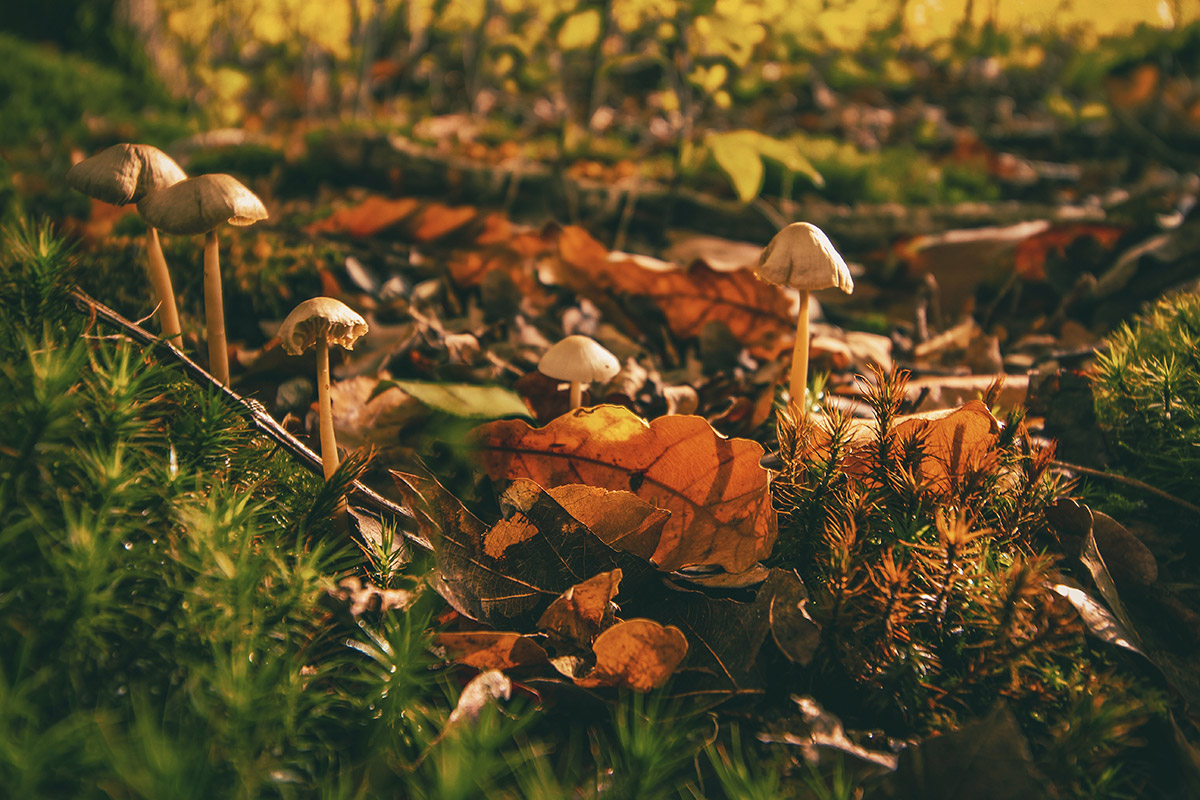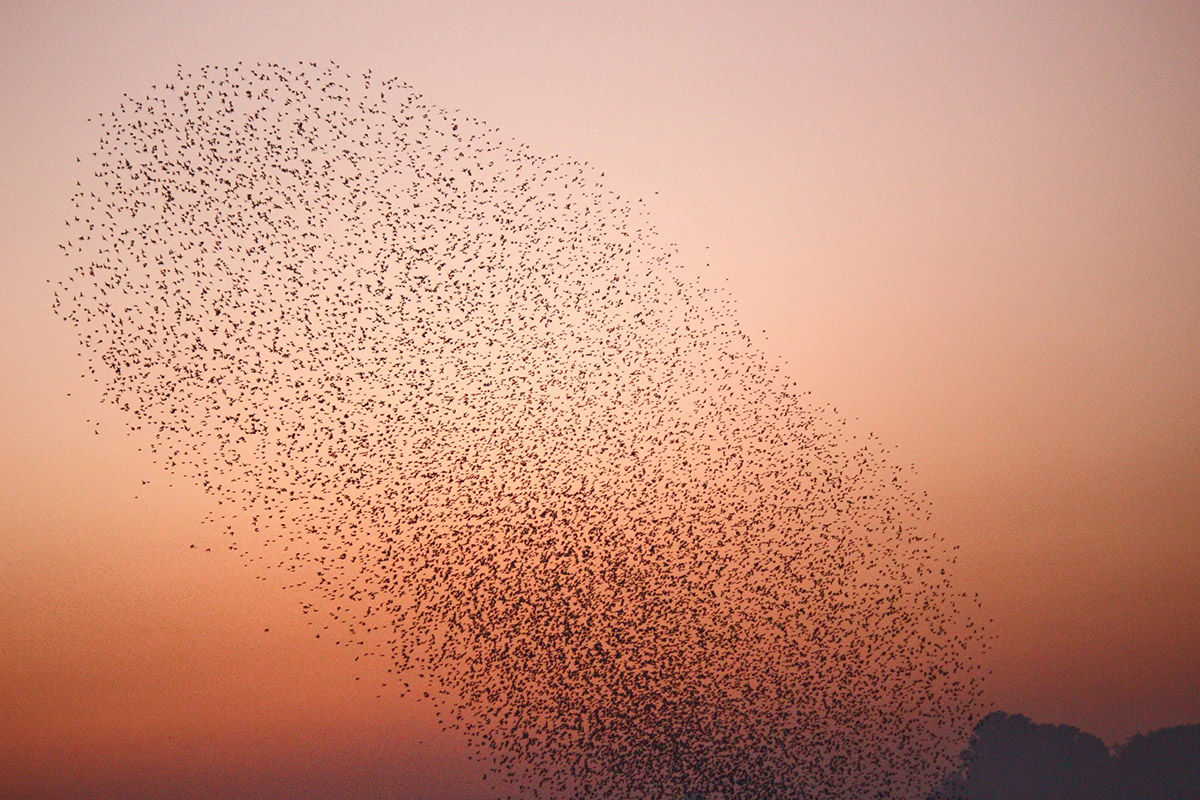Autumn Spectacles
Mushrooms
September is traditionally the time of year when fungi begin to appear across forest floors and in woodlands, fading away by early December.
In a similar way to flowers on a plant, fungi are the ‘fruiting bodies’ of mushrooms and toadstools, producing the spores (equivalent of seeds) from which new fungi grow.

There are over a hundred good, edible species growing in the UK but if you are intending to pick any, make sure you do your research beforehand. Many species are poisonous – mushroom identification takes skill and practice. If in doubt, don’t pick them.
If you’re lucky, you may come across the famous Giant Puffball. This mushroom grows to around 80cm wide and is often mistaken for a stray football.
Migrating geese
Often seen cutting their way across crisp autumn skies, flocks of geese including Canada, Barnacle and Greylag use Britain as a stop off on their journey from the Arctic Circle.

Look out for their famous V-formation, which is done so to aid their progress and save energy; the front bird breaks up the wall of air that the flock is flying into, leaving a wake of swirling air behind. This gives extra lift to the next bird along it.
Autumn colours
One of the enduring features of autumn is the colours of the trees. This is caused by the cooling temperatures as summer fades.
As trees become dormant, a compound called abscisic acid triggers a seal to develop at the base of the leaves, reducing water reaching the leaves and trapping the chemicals contained in them. The chemicals gradually break down, changing the colour of each leaf before it drops to the ground.

Among our native trees, the silver birch puts on one of the most spectacular autumn displays. Golden leaves contrast with the tree’s pale, peeling bark, and all of this is enhanced by the dappled effect created by the tree’s naturally airy structure.
Spiders
You don’t have to go too far to see spiders at this time of year, both outdoors and indoors. Orb weavers are possibly the most common in autumn; they are a group of builders that create the spiral wheel-shaped webs often found in gardens, fields, and forests.
It’s indoors where most people won’t want to see a spider. Even so, the average UK household contains about 30 spiders at any one time. Most of these are females that live indoors all year round and it’s the amorous males from outside who come into the houses, looking for the females. This is why you often see more of them at this time of year.
Murmurations

One of the most hypnotic sights in autumn are the starling murmurations that place in our skies in late November and early December. Thousands of starlings take to the wing all at once, creating what look like dark clouds over our towns. As the starlings rise, turn, and dip, so the shape of the ‘cloud’ changes, creating a stunning spectacle in the evenings skies. Some of these murmurations can hold up to 100,000 birds.
The best chance of seeing murmurations are early evenings as the birds fly to their communal roosting sites for the night.
Hoarders

Autumn is a busy time for many species that are preparing for winter by stocking up on food.
Magpies, jays, and squirrels will be particularly busy, stocking up on nuts, berries and other food sources. Whereas grey squirrels bury their nuts in various locations, the rare red squirrels that you may spot in mid-Wales, hoard their stash in one single place.
Many nuts and acorns are forgotten about and turn into trees years later.
Red fox

Throughout autumn, the family unit of many fox families begins to break down. This is due to the cubs being evicted by parents to make room for the new breeding season during the winter.
Some young cubs may try and stay with their parents, especially if the family is pretty well resourced.
The Cold Moon
In December, winter sets in and the Full Moon is called the Cold Moon. It is also referred to as Long Nights Moon, the Oak Moon and the Moon before Yule. It follows the Harvest Moon in September, the Blood Moon in October, and the Frost Moon (also known as the Snow Moon or Beaver Moon).

The Cold Moon takes place on the night 26th December this year, and it’s the first full moon after the Winter Solstice.

